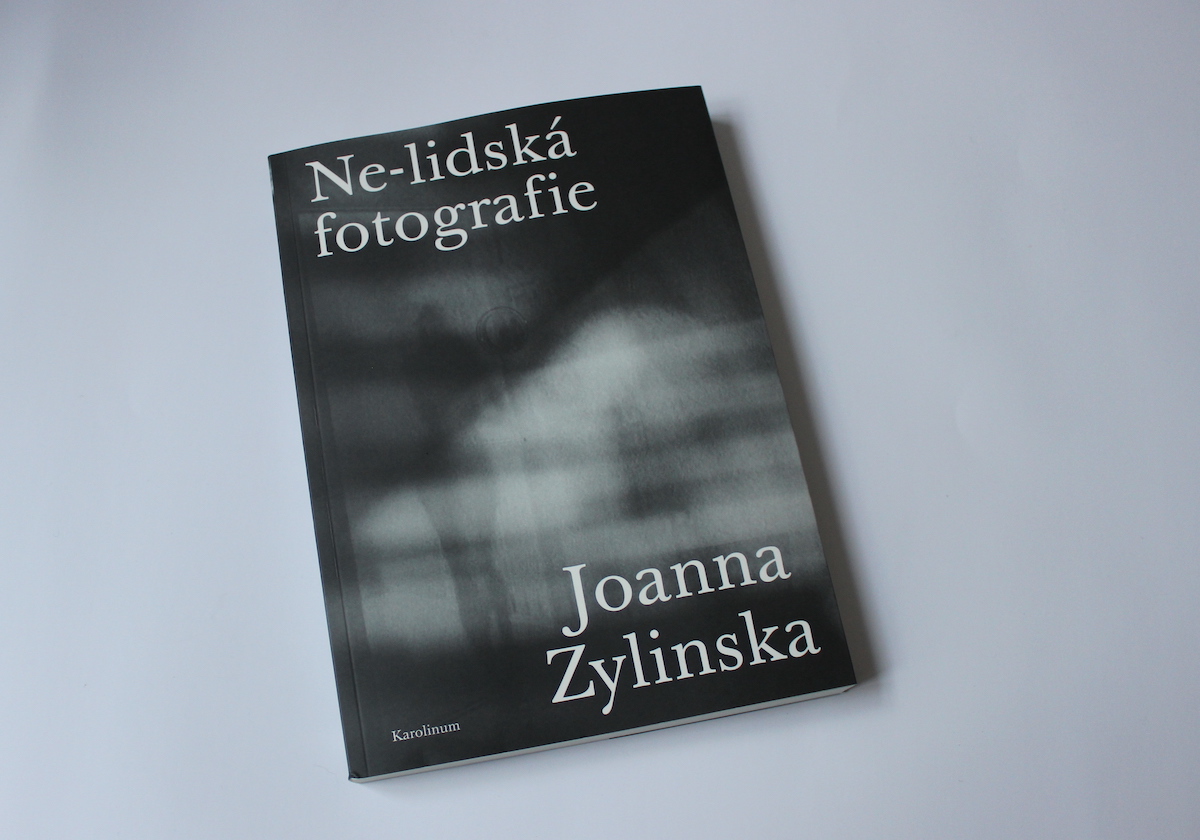The World-Building Power of Photography
In what lies the power or even the world-building properties of photography? Joanna Zylinska, a media theorist, artist and curator from King’s College London, seeks to answer this question in her book Nonhuman Photography, freshly translated into Czech by Robert Silverio. To speak of the world-building power of photography is no small goal but in Zylinska’s perspective, in which photography is always necessarily a socio-political-ethical force, such a characterization is logical. In her conception of non-human photography, the author draws primarily on the theoretical foundations of media determinism and media ecology, posthumanist philosophy and the philosophy of photography. The result of the interconnection of these diverse approaches is the author’s definition of so-called non-human photography. According to Zylinska, it overcomes the limitations of the binary of the human and the non-human and finds a liminal space outside these two categories that harbours a significant socio-political-ethical transformative potential. She defines non-human photography itself in three ways, which may or may not necessarily overlap.
The first variant is photography free from humans, which can be, for example, a photograph of a depopulated vast landscape. To such non-human photographs, Zylinska attributes the ability to represent the world after humans, that is, after humanity itself as well as after the specific acts of particular groups of people that have imprinted themselves on the appearance of a given landscape. In this way, she affirms the overcoming of anthropocentrism in non-human photography – although there are traces of humans or the observer feels the absence of people in the photograph, it is the landscape itself that is the focal point of attention.
The second variant of non-human photography are images that are not made by humans, such as traffic control cameras, CCTV cameras, Google Street View or, from a complately different angle, fossils. Here Zylinska emphasises the increasing separation of photography from the activity of humans but also from what they themselves see. Particularly in the case of traffic control cameras and CCTV cameras, this separation lies in their continuous operation, so that a photographic system of this type fundamentally surpasses human possibilities in terms of its own inexhaustibility.
The third variant of non-human photography is that which is not intended for humans at all. This encompasses, for example, QR codes and other algorithmic modes of machine communication. The human eye is able to see such images in an elementary way, and partly even to recognise their differences, but it is not able to read them, which means that for the human itself, without the extension of a specific device, they lose much of their communicative purpose.
The second and third variants of non-human photography in particular fall into the field of the study of the so-called operative images, as Martin Charvát discusses in detail in the book’s excellent afterword. Zylinska, as a theoretician of photography but also as an active photographer and artist, supplements her discussion with a wide range of examples, including her own photographic projects such as iEarth. These examples serve as a way of illustrating the answer to Zylinska’s initial question: wherein lies the world-building power of photography. Namely, they explicitly depict a world in which the human figure does not stand at the centre, and in effect create an alternative socio-political-ethical configuration in which an individual is not superior to their environment.
#46 tourism
Archive
- #45 hypertension
- #44 empathy
- #43 collecting
- #42 food
- #41 postdigital photography
- #40 earthlings
- #39 delight, pain
- #38 death, when you think about it
- #37 uneven ground
- #36 new utopias
- #35 living with humans
- #34 archaeology of euphoria
- #33 investigation
- #32 Non-work
- #31 Body
- #30 Eye In The Sky
- #29 Contemplation
- #28 Cultura / Natura
- #27 Cars
- #26 Documentary Strategies
- #25 Popular Music
- #24 Seeing Is Believing
- #23 Artificial Worlds
- #22 Image and Text
- #21 On Photography
- #20 Public Art
- #19 Film
- #18 80'
- #17 Amateur Photography
- #16 Photography and Painting
- #15 Prague
- #14 Commerce
- #13 Family
- #12 Reconstruction
- #11 Performance
- #10 Eroticon
- #9 Architecture
- #8 Landscape
- #7 New Staged Photography
- #6 The Recycle Image
- #5 Borders Of Documentary
- #4 Intimacy
- #3 Transforming Of Symbol
- #2 Collective Authorship
- #1 Face

